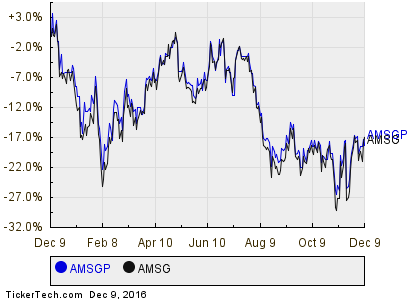Even small businesses would benefit from utilizing the accounting cycle in their business and if you are using accretion accounting, it’s an absolutist must. The information, product and services provided on this website are provided on an “as is” and “as available” basis without any warranty or representation, express or implied. Khatabook Blogs are meant purely for educational discussion of financial products and services. Khatabook does not make a guarantee that the service will meet your requirements, or that it will be uninterrupted, timely and secure, and that errors, if any, will be corrected.
- Now next comes arranging an unadjusted trial balance, which occurs at the end of the accounting phase.
- Posting involves the practice of transferring journal entries from the journal to the ledger.
- All account balances from the ledger are arranged in a report; all the debit balances are added and compared to the total of all the credit balances.
- Finally, the accounting cycle is ended by closing of the company’s books.
Our professional team manages all your accounting worries and prepares all the financial statements required to analyze your company’s financial position. If you would be interested in getting more information regarding our services, please contact us at the earliest. Accounting software automates the entire accounting cycle by just recording the transactions. For business owners, it saves time and efforts involved in the manual accounting cycle.
The fourth step of the accounting cycle involves preparing the trial balance. This trial balance is further analyzed and checked in the next step. Every firm undergoes various transactions during the entire accounting cycle. Identifying these transactions is necessary to record them properly in the accounting books. Accounting helps you to monitor your income and expenditure and makes you compliant with legal requirements.
Step-4 of accounting cycle is to prepare un-adjusted trial balance
Now, transactions in journal are recorded in the order in which they occur. The whole exercise of recording transactions in journal is referred to as journalising. Following the accounting cycle ensures that you remain compliant with these regulations and accounting standards. Vedantu’s expert accounts professionals have gathered all the important information regarding the process of accounting and summed it up in an easy-to-understand manner for its readers.

If you using accounting software, posting to the ledger is mainly done automatically in the background. An accounting cycle ensures that every financial transaction of your organisation is “accounted” for. There are differences in the accounting cycle, most noticeably between cash and accrual accounting. The accounting cycle may have seven to ten phases, depending on how comprehensive each phase is. Now, the whole idea of preparing Trial Balance is to simplify the task of preparing the basic financial statements. Further, it is used in preparing the final accounting statements of the business.
Recording of transactions in the books of accounts
The material and information contained herein is for general information purposes only. Consult a professional before relying on the information to make any legal, financial or business decisions. Khatabook will not be liable for any false, inaccurate or incomplete information present on the website. For the latest updates, news blogs, and articles related to micro, small and medium businesses , business tips, income tax, GST, salary, and accounting. Through these fundamental accounting statements, the corporate management communicates financial information to all of its stakeholders. So, each of these entries adjust incomes or expenses in order to match them with the revenues and expenses of the current period.
Various adjustments are made in accounts at the end of the accounting period before the preparation of the final trial balance. It may be prepared after adjusting entries that are made before the preparation of financial statements. The Adjusted Trial balance is nothing but a list of all the General ledger accounts contained in the ledger of a business after adjusting entries are made. While a trial balance verifies your accounting books are accurate, and an adjusted trial balance corrects errors in your books.
The accounting cycle gets started and finished within an accounting period, which is the time financial statements get prepared. However, the conventional accounting period type is the annual period. The Accounting cycle is an amalgamative procedure of discovering, evaluating, and recording the events of accounting in a company. This series https://1investing.in/ of steps start whenever a transaction takes place and ends with inclusion in financial statements. The deferred adjusting entry ensures that the right amounts are recorded on the balance sheets and income statements of a corporation. To fully understand the accounting cycle, you must first understand basic accounting principles.
The post-closing trial balance or the after-closing trial balance is the last step of accounting cycle. It is prepared after making and posting all necessary closing entries to relevant ledger accounts. The next step in the accounting cycle is to prepare the trial balance, which is nothing but a list and total of all the debit and credit accounts for an entity for a given period. All account balances from the ledger are arranged in a report; all the debit balances are added and compared to the total of all the credit balances. The trial balance checks only whether the total debits match total credits; it does not authenticate the data entered. Accounting cycle is the complete sequence of Accounting procedure beginning from identifying and recording the transaction till the preparation of final accounts.
It is one of the most important financial statements for a business. The income statement’s goal is to present a summary of a company’s sales, costs, profits, losses, and consequent net income for a certain accounting cycle starts with year, quarter, or another time period. An adjusting journal entry is a journal entry made in a company’s general ledger at the end of an accounting period to record any unrealized revenue or expenditures.
Record Transactions in Journal
With the help of financial statements and closing statements, business owners can derive a meaningful inference about their business activities. This part of the accounting cycle includes posting all the Debit and Credit transaction into a statement belonging to a ledger account as shown in the below image. This is the step where every transaction that is made by the company is recorded in journals. The adjusting of journal entries is done so that all revenues, expenses, gains, and losses are properly stated and allocated to the proper period or periods. Adjusting journal entries are prepared for revenue accrual or deferral, expense accrual, expense prepayments, depreciation and allowances.

An Accounting cycle provides a guide to record, analyse and provide the final report of a business’s financial activities. This cycle makes business activities and financial accounting easier for business owners. The closing of an accounting cycle provides the business owner with the full report of the financial report of the business. A trial balance is a record that displays the balances, or a total of credits and debits, of all accounts in the ledger. The accounting process focuses on past events and guarantees accurate documentation of the recorded financial transactions.
Accounting Cycle: Definition and Steps in Accounting Cycle Process
Accounting is a system meant for measuring business activities, processing of information into reports and making the findings available to decision-makers. The documents, which communicate these findings about the performance of an organisation in monetary terms, are called financial statements. The accounting cycle is a systematic set of rules to make sure there are conformity and preciseness in financial statements. So far, smooth process and computerized systems of the accounting cycle have assisted in decreasing mathematical errors. Once you have started an adjusted trial balance, collecting financial statements is an impartially straightforward duty. Journal is the book in which business transactions are recorded for the first time.
Financial statements are generally prepared at year-end, as specified by the regulations. Public agencies are expected to file the financial statements by specific dates. Hence, their accounting cycle revolves around the times necessary for reporting. Like everything also about bookkeeping and accounting, the accounting cycle is a process that can help you to designate and enter your transactions rightly.
Journal entries are generally posted to the ledger on a continual basis, as soon as business proceedings arise, to make sure that the company’s books are always up to date. Theledger is a large, numbered list revealing all your company’s proceedings and how they affect each of your business’s individualaccounts. The general ledger is like the skeleton key of your bookkeeping structure.